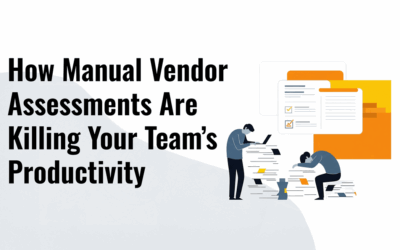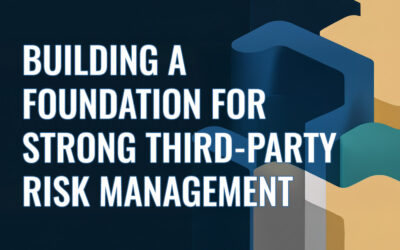CISOs often spend a good deal of time securing their internal infrastructure, failing to consider just how much risk is outside their direct control. In reality, many data breaches originate outside the organization, often through unwitting third-party vendors with limited oversight and too much access.
Without careful vendor access management, these relationships can quickly increase your attack surface and expose excessive security gaps — gaps that often go unnoticed until a breach occurs.
From Innocuous Vendor Networks to Vulnerable Attack Surfaces
Vendors are critical relationships that give enterprises access to a variety of software platforms, connected devices, and service providers. But the problem is that modern enterprises are working with hundreds, thousands, even tens of thousands of interconnected vendors, with each new connection introducing a new point of risk that’s increasingly difficult to monitor and control. This means that if you’re not continually monitoring your vendor network (not to mention their vendors), you’re exposing yourself to unnecessary risk.
According to the Ponemon Institute, 51% of companies have experienced a breach tied to a third party, 74% of them caused by vendors having broader access than necessary. Take the SolarWinds and Change Healthcare breaches — in both cases, one supplier’s compromise led to significant fallout across the country. These weren’t targeted attacks against any single organization but rather exploitations of a structural vulnerability created by interconnected vendor networks.
From Reactive to Proactive Risk Management
Identifying and mitigating the risk that’s inherent to vendor relationships begins with embracing three core principles:
Visibility
You can’t manage what you can’t see. That’s why you must start with developing full visibility into your own infrastructure, then that of your vendors, and finally that of your vendors’ vendors. Mapping all internet-facing assets and monitoring them continually is the first step toward identifying risk before it becomes a breach.
Managed Access
It’s time to move beyond static permissions. Managed access means regularly evaluating and adjusting vendor privileges throughout the lifecycle, from onboarding to offboarding. It ensures that access aligns with function and that every connection remains secure, monitored, and accountable. Assessing a vendor’s access requirements should begin at the onboarding stage and continue throughout the relationship lifecycle.
Control
Diving deeper into managed access, one of the best ways to take a more granular approach to access management is to tier your vendors based on criticality and make sure they only have access to the minimum they need to fulfill their responsibilities.
For example:
- Tier 1: Vendors requiring extensive access to critical systems and sensitive data.
- Tier 2: Vendors needing limited access to sensitive systems but still process important data.
- Tier 3: Vendors with minimal access requirements who don’t directly handle sensitive information.
This tiering limits the blast radius of any compromise and ensures that overexposure doesn’t become an entry point for attackers. It also allows security teams to focus their most rigorous controls and monitoring capabilities on the vendors requiring greater access levels.
Turn Rising Challenge Into Controlled Risk
You’re only as strong as your weakest link. While those weak links often exist outside your direct control, they’re still within your risk responsibility.
You can invest millions in internal cybersecurity, but if you’re not continuously monitoring your vendor network and verifying that even their vendors have robust security programs, you’re exposing yourself to undue risk.
ProcessBolt is built to address these challenges through automated assessments, continuous monitoring, and integrated vendor lifecycle management. Our solutions provide the visibility and control needed to protect your enterprise in an increasingly complex vendor ecosystem, turning what could be your greatest vulnerability into a well-managed aspect of your security posture.
Contact ProcessBolt to find out more.




